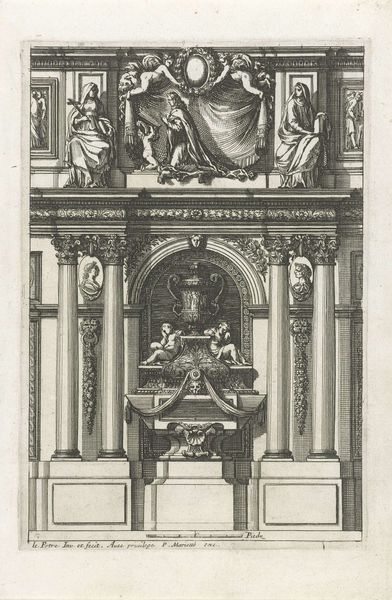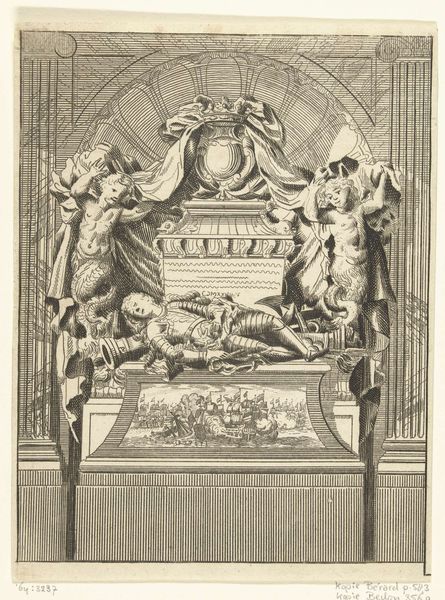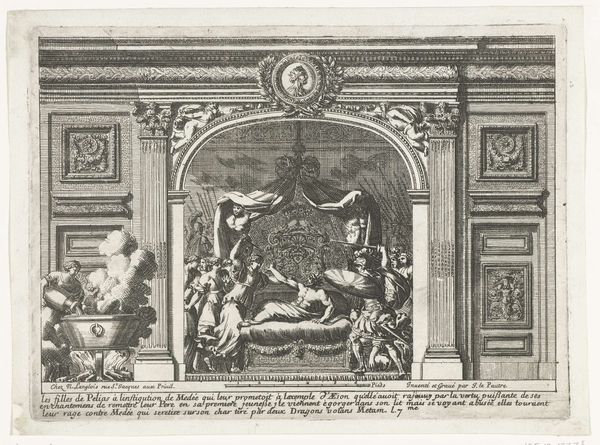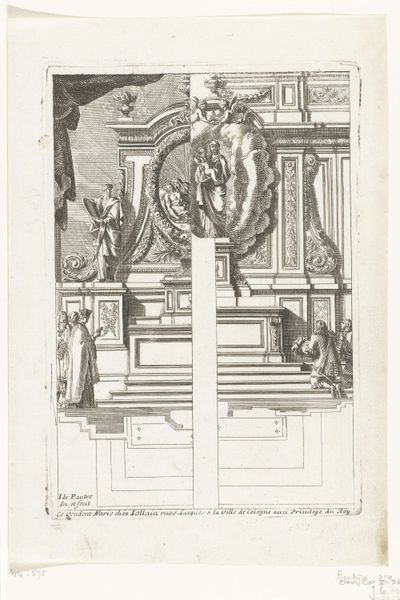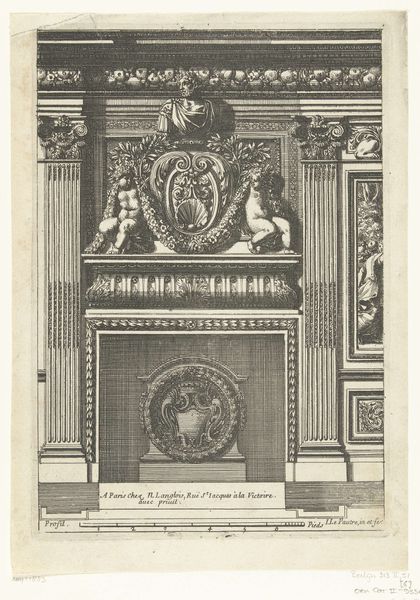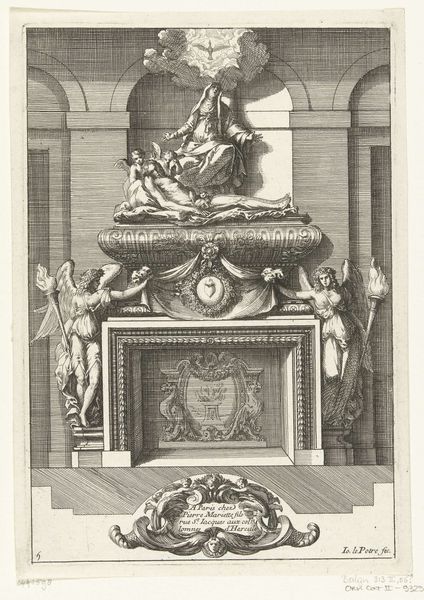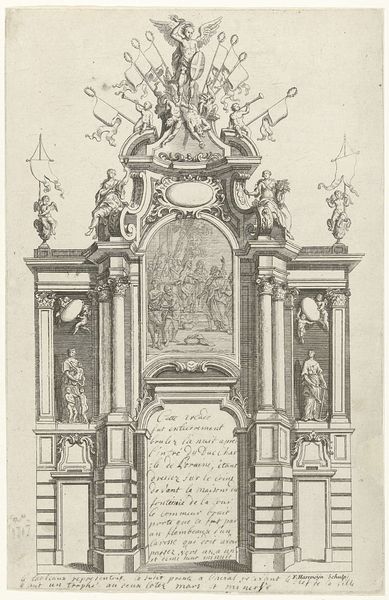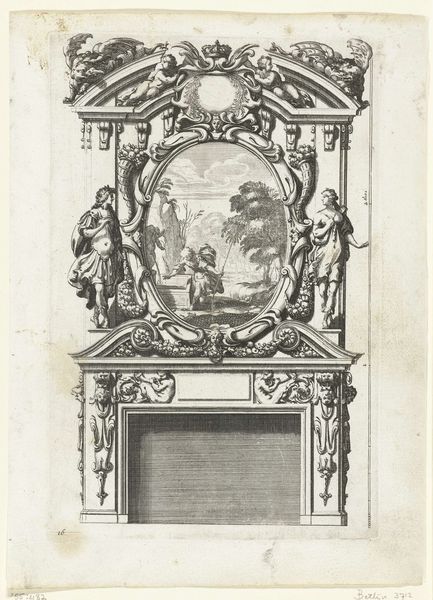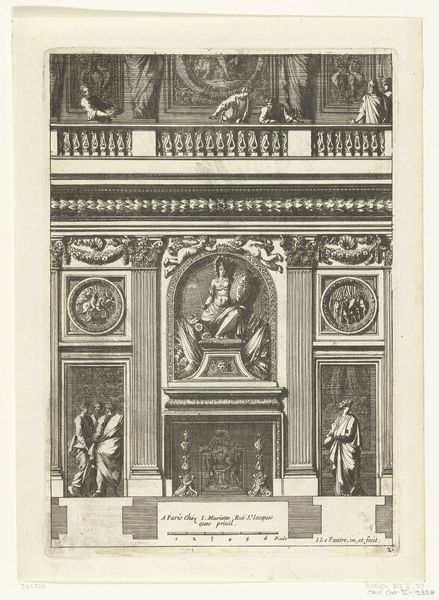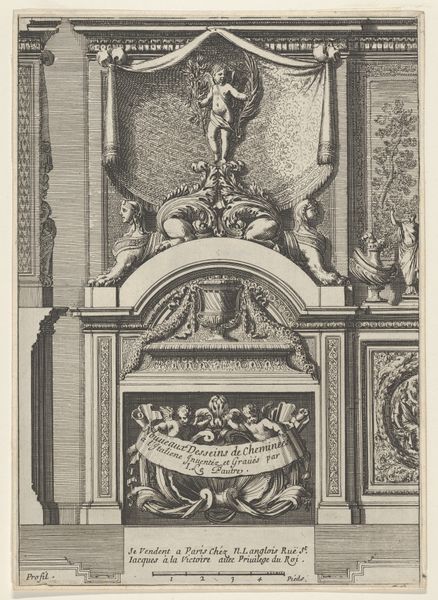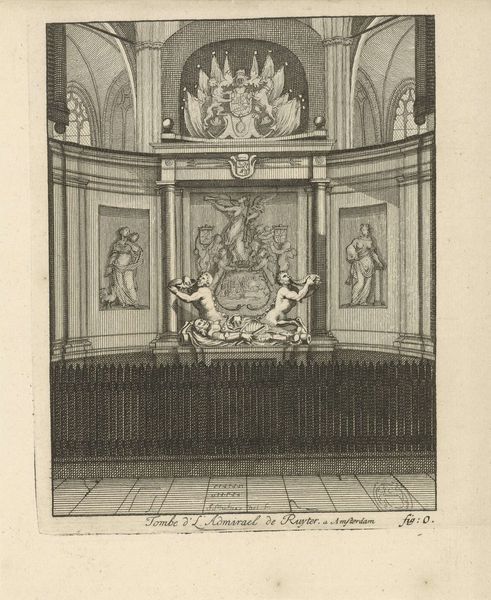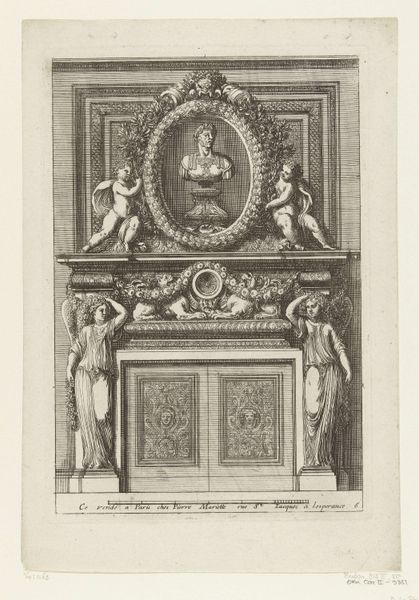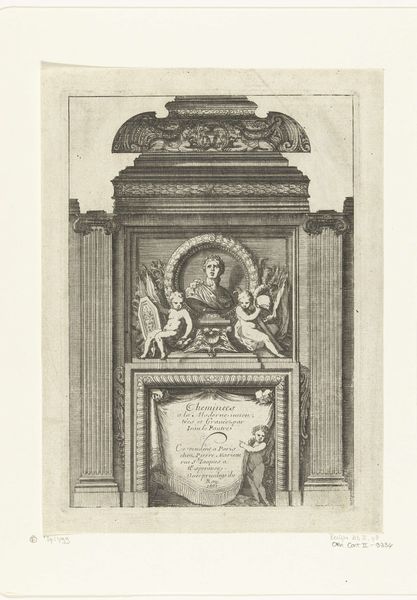
Dimensions: height 184 mm, width 136 mm
Copyright: Rijks Museum: Open Domain
Editor: This is "Grafmonument in nis," a pre-1800 engraving by an anonymous artist, here at the Rijksmuseum. It depicts, I think, mourning figures. It feels very somber and baroque to me, with all that heavy ornamentation. What strikes you about this piece? Curator: Well, immediately the 'vanitas' symbolism leaps out. This work speaks to the ephemeral nature of life, a popular theme in the early modern period. The skull, of course, is a direct memento mori. The very format - a print - emphasizes this accessibility. The questions it raises for me are: who was the intended audience, and how does its depiction of mourning relate to broader societal views on death and commemoration at the time? Editor: So, was this kind of print something that would be displayed publicly, or more privately? Curator: Interesting question! Prints like this often served multiple functions. They could be collected by individuals interested in art and allegory. But they also circulated widely, informing public sentiment and taste. Consider how printmaking democratized imagery, challenging the elite’s control over artistic representation and what that may say in our understanding of it. This print may offer insight into funerary practices or prevailing attitudes towards grief, depending on its original context and audience. What aspects of the composition stand out to you in this context? Editor: I notice the central portrait in the laurel wreath. Does the positioning suggest that remembrance itself is being celebrated or idealized? Curator: Precisely! And consider those weeping figures flanking the central image. Their classical drapery lends an air of timelessness. Are they generic figures representing Grief, or do they allude to specific historical or mythical figures relevant to the deceased? Editor: I didn’t think about that, but now it adds another layer to it. Thinking about who it was for or who it depicts shapes its significance. Curator: Exactly! Considering the cultural and historical factors gives us an opportunity to go further into this type of imagery and its public reception. Editor: It's fascinating to see how many interpretations a single print can hold once you start exploring the socio-historical background! Thanks for walking me through this!
Comments
No comments
Be the first to comment and join the conversation on the ultimate creative platform.
